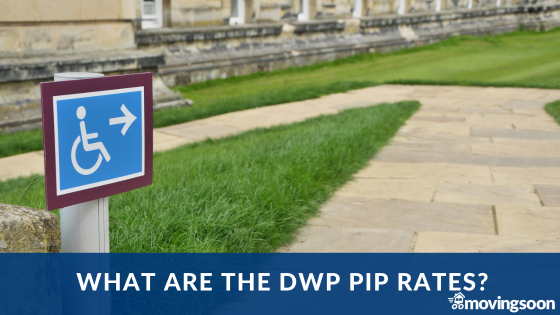Trying to find your way through the different government benefits can often be time consuming. One such benefit that many individuals may find themselves grappling with is the Personal Independence Payment (PIP) provided by the Department for Work and Pensions (DWP).
You can also search our website to find accessible housing to rent.
Understanding PIP Rates
Understanding what the PIP rate is for and how it can support individuals with disabilities or long-term health conditions is crucial. In this post, we’ll delve into the various PIP rates and what they cover. Hopefully we’ll offer some clarity and insight for those seeking assistance.
What are PIP Rates?
What is PIP? Before diving into the specifics of PIP rates, let’s first establish what PIP itself entails. PIP is a non-means-tested benefit designed to help individuals aged 16 to State Pension age who have a disability or long-term health condition. This will be something which affects their ability to carry out daily living tasks or mobility-related activities. It aims to provide financial support to cover the extra costs associated with living with a disability or health condition.
PIP rates are determined based on an individual’s level of need in two key areas: daily living and mobility. Each area has its own set of descriptors. They outline the activities and criteria against which a claimant’s ability is assessed. The rates are divided into two components. There’s the daily living component and also the mobility component. Let’s explore each in detail:
Daily Living Component
The daily living component of PIP focuses on an individual’s ability to carry out essential tasks required for independent living. This includes activities such as preparing meals, managing medication and engaging with others. The rates for the daily living component are categorised as standard rate and enhanced rate.
- Standard Rate: Individuals who have limited ability to carry out daily living activities may be eligible for the standard rate. This level of support provides financial assistance to help with the additional costs incurred due to disability or health conditions.
- Enhanced Rate: Those with more significant challenges in daily living tasks may qualify for the enhanced rate. This higher level of support offers increased financial assistance to meet the extra needs arising from disabilities or health conditions.
Mobility Component
The mobility component of PIP assesses an individual’s ability to move around and travel independently. This includes activities such as walking, using public transportation and navigating unfamiliar environments. Similar to the daily living component, the mobility component also offers standard and enhanced rates.
- Standard Rate: Individuals who face some limitations in mobility, but can still move around independently may qualify for the standard rate. This level of support provides financial assistance to help cover the additional costs associated with mobility challenges.
- Enhanced Rate: Those with severe mobility impairments, such as being unable to walk or having significant difficulty in moving around, may be eligible for the enhanced rate. This higher level of support offers increased financial assistance to address the heightened needs related to mobility issues.
Assessing Eligibility for PIP
Determining eligibility for PIP and the appropriate rate involves undergoing a thorough assessment. This is conducted by healthcare professionals appointed by the DWP. The assessment evaluates how an individual’s disability or health condition impacts their ability to carry out daily living tasks and mobility-related activities. It’s essential to provide accurate and detailed information during the assessment process to ensure a fair evaluation of eligibility and entitlement to PIP.
Appeals and Reassessments for PIP
In some cases, individuals may disagree with the outcome of their PIP assessment or experience changes in their health condition that affect their eligibility. In such instances, there are avenues for challenging decisions through the appeals process. Additionally, PIP recipients may undergo periodic reassessments to review their circumstances and ensure they continue to receive the appropriate level of support.
Understanding the Purpose of PIP Rates
The overarching goal of PIP rates is to provide financial assistance to individuals with disabilities or long-term health conditions. This enables them to lead more independent and fulfilling lives. It offers support tailored to the specific needs of each individual. PIP aims to alleviate the financial burden associated with disability-related costs. In turn this facilitates greater inclusion and participation in society.
Navigating the complexities of the DWP’s Personal Independence Payment (PIP) can be daunting. However, understanding what the PIP rate is for is essential for those seeking support due to disabilities or long-term health conditions. It’s important to familiarise yourself with the various PIP rates and what they cover. It enables you to better assess eligibility, navigate the application process and access the financial assistance you need to thrive despite the challenges you may face. See how much PIP you could get. Remember, you’re not alone in this journey, and there are resources and support available to help you along the way.


